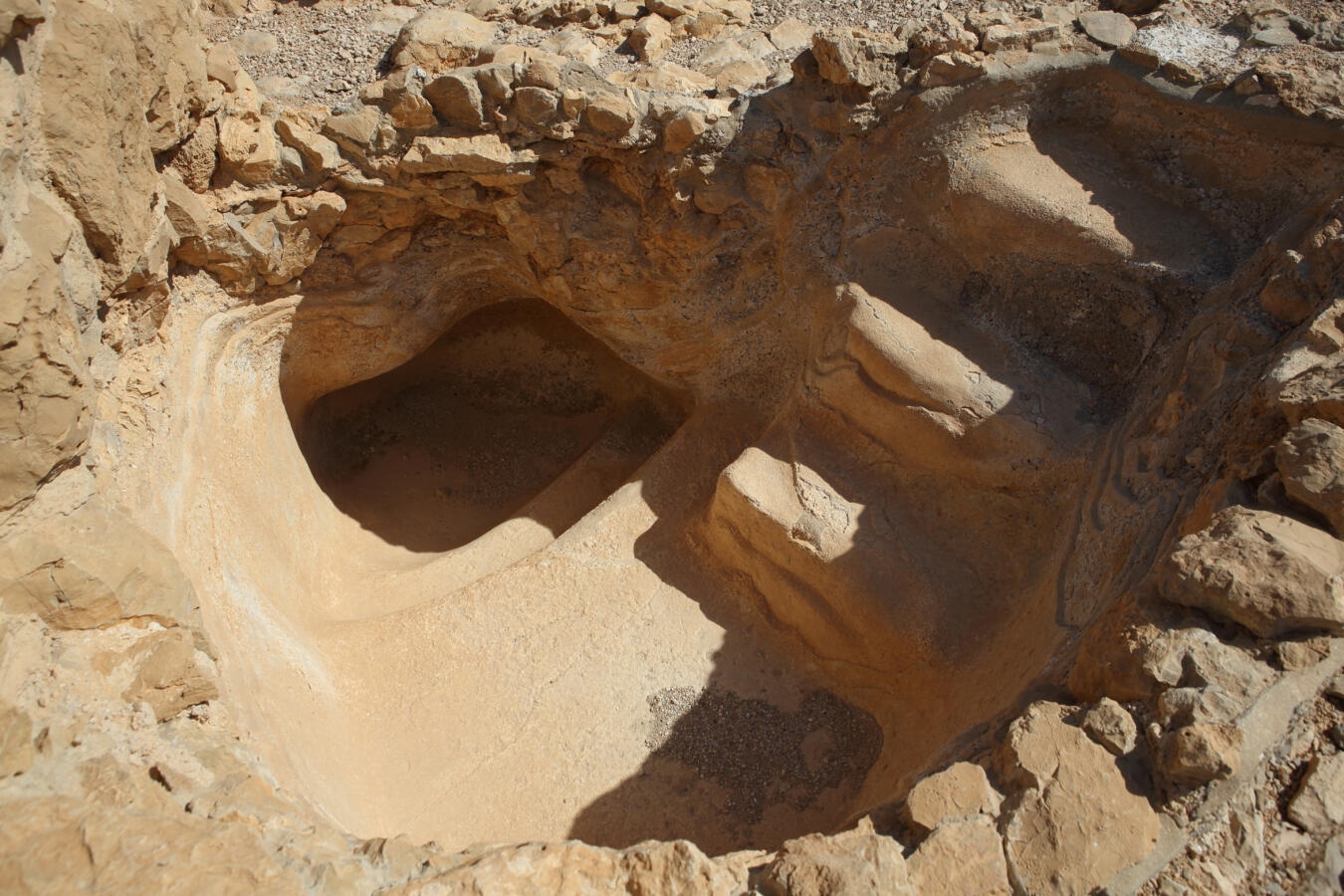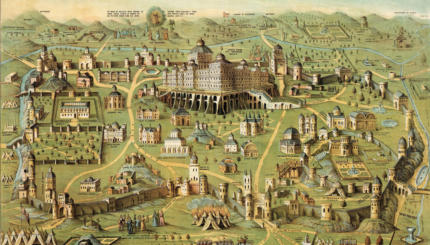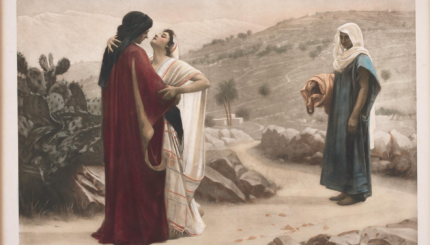The history of conversion reflects the ebb and flow in the relationship between the Jewish people and the cultures in which they have lived.
There is some evidence that when Jews have felt strong and self-confident, a universalistic impulse — which holds that the Jewish people has a religious obligation to offer Judaism to the world and welcome converts — has impelled them to share their God with all people. But when Jews have been at risk from the surrounding culture or from political persecution, they have turned inward and focused on the particularist elements of Jewish law and practice — the unique, defining rituals and institutions — in an effort to survive as a people.
Ancient Conversion
In biblical Israel, during ancient times, Israelite religion and nationality were virtually indistinguishable. As a result, conversion as a concept did not really exist and most new members of the community joined through assimilation. For example, a resident alien, or ger toshav, might become part of the Israelite people through intermarriage, while other nokhri, or foreigners, might remain separate from Israeli society.
The exile of the Jews in 586 BCE detached religion from national identity, allowing the religious elements space to develop independently. Because this new version of Judaism was detached from the land of Israel, its portability meant that God could be worshipped anywhere. Eventually, the Israelite God became accessible to any gentile who adopted the Jewish religion by undergoing the formal conversion procedures developed by the rabbis.

Help us keep Jewish knowledge accessible to millions of people around the world.
Your donation to My Jewish Learning fuels endless journeys of Jewish discovery. With your help, My Jewish Learning can continue to provide nonstop opportunities for learning, connection and growth.
After the destruction of the Second Temple in 70 CE and the defeat of Bar Kochba’s revolt in 135 CE, external restrictions imposed by Christian and Muslim authorities led to a decline, although not an absolute end, to proselytism. The defeat by the Romans turned Jewish life inward, and a new focus on religious observance was viewed as the key to survival.
Conversion in the Middle Ages
In the Middle Ages, Christian and Muslim authorities prohibited proselytizing by Jews, although conversion did continue on an individual basis. There were also two interesting cases of mass conversion to Judaism — that of Yusuf Dhu Nuwas, the King of Himyar (in what is currently Yemen), in the early part of the sixth century and that of the Khazar royal house in the 720s.
But as persecutions and restrictions increased, along with Christianity and Islam proving more successful in winning converts, the Jews began to focus on separation and autonomy within their own communities as a way to achieve some sense of control over their lives. The new theology was one of performing the mitzvot [commandments] and waiting for the messiah, without any outreach to potential converts. The codifiers of Jewish law chose this inward-looking survivalism over an outward-looking sense of mission, thereby enshrining it in Jewish law and making opposition to conversion the Jewish tradition.
Modern Conversion
After the Emancipation of the late 18th and early 19th centuries (when Western European Jews were granted citizenship and allowed to move outside the ghettoes), the idea of a Jewish mission was revived among the Orthodox, both in Germany and especially in France, as well as by the Reform. The Reform version promoted a liberal universalism in the prophetic tradition, yet at the same time stripped Judaism of its particularist elements.
READ: 10 Questions About Jewish Conversion You Want to Know But Are Afraid to Ask
In the second half of the 19th century in the United States, the Reform movement began to welcome converts, affirming in organizational pronouncements that the purpose of the exile was “to lead the nations to the true knowledge and worship of God.” In the early 20th century, liberal theologian Leo Baeck wrote in The Essence of Judaism that “the Jewish religion is intended to become the religion of the whole world… Every presupposition and every aim of Judaism is directed towards the conversion of the world to itself.”
At the end of the 19th and beginning of the 20th century a stringent approach to conversion prevailed, although liberal elements permitted conversions in the case of intermarriage. But in response to the increase in intermarriage after the Second World War and to the non-halakhic [not following Jewish legal requirements] conversions of the Reform movement, the Orthodox began to focus more on the particularistic, especially the legal, aspects of Judaism.
READ: Conversion to Judaism, Denomination by Denomination
Conservative Judaism, on the other hand, sought a balance between particularism and universalism. The Conservative movement welcomed converts for pragmatic reasons — as a means to combat intermarriage — but not in the light of a specific covenantal mission, although individual voices did promote a sense of mission.
More recently, a number of sociological changes have caused Jewish attitudes toward conversion to become more positive: With the decline in anti-Semitism in North America, Judaism seemed more attractive; more Jews within intermarriages remained loyal to Judaism; more converts were choosing Judaism; ethnicity was more valued; cults and evangelicals were becoming increasingly active; and converts themselves were proactively demanding acceptance by American Jews.
READ: So You Want to Convert to Judaism ..
As a result, the liberal movements have convened conferences about outreach and developed educational programs and materials for non-Jews, particularly the non-Jewish spouses in intermarriages. The Orthodox movement continues to accept converts in principle, but tends to reject converts not converted according to what the Orthodox understand to be halakhic (Jewish law) procedures.



